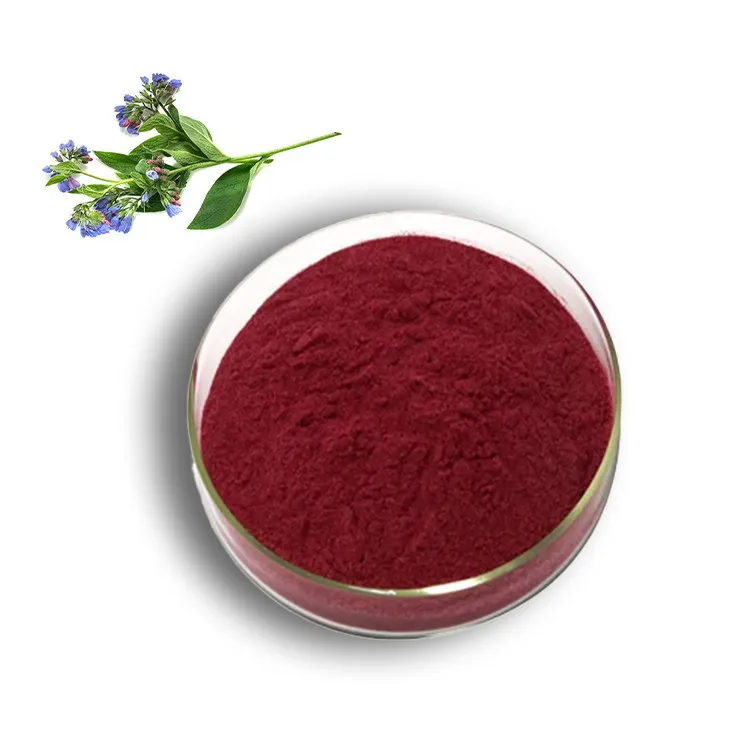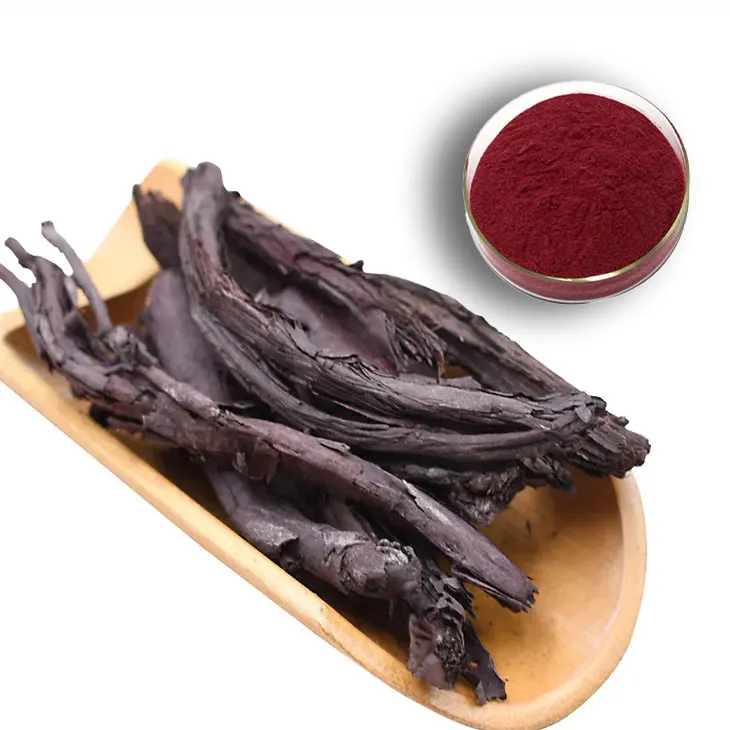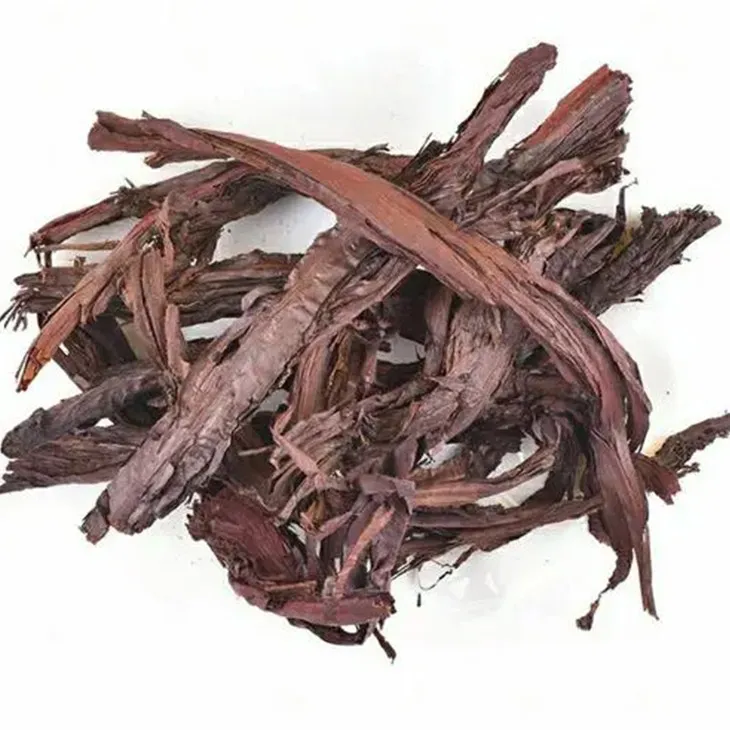- 0086-571-85302990
- sales@greenskybio.com
Supercritical Carbon Dioxide Extraction of Shikonin.
2024-11-28

1. Introduction
Shikonin, a pigment mainly derived from plants such as Lithospermum erythrorhizon, has attracted significant attention in the field of natural product research. It is not only a pigment but also possesses remarkable medicinal properties. The extraction of Shikonin has been a subject of continuous exploration. Traditional extraction methods have certain limitations, while supercritical carbon dioxide extraction has emerged as a promising alternative. This extraction method offers several unique advantages and has the potential to revolutionize the extraction process of Shikonin.

2. Shikonin: Properties and Applications
Shikonin is a natural compound with a wide range of biological activities. It has been found to exhibit antibacterial, antifungal, anti - inflammatory, and anticancer properties. In traditional medicine, shikonin - containing plants have been used for the treatment of various diseases, such as skin disorders, burns, and infections.
In modern medicine, shikonin has also shown great potential in drug development. Its unique chemical structure makes it a valuable lead compound for the synthesis of new drugs. Moreover, shikonin can be used in the cosmetic industry as a natural pigment and antioxidant. It can protect the skin from oxidative damage and improve skin health.

3. Supercritical Carbon Dioxide: An Ideal Extraction Medium
3.1 High - Selectivity Extraction Mechanism
One of the most significant advantages of supercritical carbon dioxide extraction is its high - selectivity extraction mechanism. Supercritical carbon dioxide can selectively dissolve shikonin from the complex plant matrix while leaving behind other unwanted components. This selectivity is crucial for obtaining a pure and high - quality shikonin extract.
3.2 Excellent Diffusivity and Solvating Power
As a supercritical fluid, supercritical carbon dioxide has excellent diffusivity and solvating power. The small molecular size and high fluidity of supercritical carbon dioxide enable it to penetrate deep into the plant material, facilitating the extraction of shikonin. Its solvating power ensures that shikonin can be effectively dissolved and separated from the plant matrix.
3.3 Gentle Extraction Conditions
The critical point of carbon dioxide (31.1 °C and 7.38 MPa) allows the extraction to be carried out under relatively gentle conditions. Compared to traditional extraction methods that often require high temperatures and strong solvents, supercritical carbon dioxide extraction minimizes the degradation of shikonin. This is particularly important for maintaining the bioactivity and quality of shikonin.
3.4 Green and Environment - Friendly
The use of supercritical carbon dioxide is in line with the trend of green chemistry. Carbon dioxide is a non - toxic, non - flammable, and readily available gas. After the extraction process, supercritical carbon dioxide can be easily recovered and recycled, reducing environmental pollution. This makes supercritical carbon dioxide extraction a more sustainable option compared to traditional extraction methods.

4. Factors Affecting Supercritical Carbon Dioxide Extraction of Shikonin
4.1 Pressure
Pressure is a crucial factor in supercritical carbon dioxide extraction. Increasing the pressure can enhance the density and solvating power of supercritical carbon dioxide, thereby increasing the extraction yield of shikonin. However, too high a pressure may also lead to the extraction of unwanted components. Therefore, an optimal pressure needs to be determined through experimentation.
4.2 Temperature
Temperature also affects the extraction process. A higher temperature can increase the diffusivity of supercritical carbon dioxide, but it may also cause the degradation of shikonin. Therefore, a balance needs to be struck between temperature and extraction efficiency to ensure the quality of the extract.
4.3 Extraction Time
The extraction time is another important factor. Longer extraction times generally result in higher extraction yields, but after a certain point, the increase in extraction yield may become negligible. Moreover, a long extraction time may also increase the cost and energy consumption of the extraction process.
4.4 Particle Size of the Plant Material
The particle size of the plant material affects the contact area between the plant material and supercritical carbon dioxide. Smaller particle sizes can increase the contact area, facilitating the extraction process. However, too small a particle size may also lead to problems such as clogging in the extraction equipment.
5. Optimization of Supercritical Carbon Dioxide Extraction of Shikonin
To optimize the supercritical carbon dioxide extraction of shikonin, a series of experiments need to be carried out. These experiments should focus on determining the optimal values of factors such as pressure, temperature, extraction time, and particle size.
- First, a range of pressures should be tested to find the pressure that maximizes the extraction yield while maintaining the purity of shikonin.
- Second, different temperatures should be explored to identify the temperature that balances extraction efficiency and shikonin quality.
- Third, the extraction time should be optimized to avoid unnecessary energy consumption and ensure a high - yield extraction.
- Finally, the appropriate particle size of the plant material should be determined to ensure good contact between the plant material and supercritical carbon dioxide.
6. Current Research and Development Status
In recent years, there has been a growing interest in the supercritical carbon dioxide extraction of shikonin. Many research groups have carried out in - depth studies on this topic. They have explored different plant sources of shikonin, optimized extraction conditions, and evaluated the quality and bioactivity of the extracts.
Some studies have focused on improving the extraction efficiency by using co - solvents in combination with supercritical carbon dioxide. The addition of co - solvents can enhance the solvating power of supercritical carbon dioxide and improve the extraction yield of shikonin.
Other research has been directed towards the development of new extraction equipment and processes. These new technologies aim to further improve the extraction efficiency, reduce energy consumption, and ensure the quality and safety of the extracts.
7. Future Perspectives
The supercritical carbon dioxide extraction of shikonin has a bright future. With the continuous development of technology, we can expect further improvements in extraction efficiency and quality.
- One possible direction is the development of more efficient extraction equipment. New equipment designs may enable better control of extraction conditions, leading to higher extraction yields and purer extracts.
- Another area of future research could be the exploration of new plant sources of shikonin. There may be many plants that contain shikonin - like compounds with unique properties waiting to be discovered.
- Furthermore, the combination of supercritical carbon dioxide extraction with other technologies, such as biotechnology and nanotechnology, may open up new avenues for the application of shikonin in various fields.
8. Conclusion
In conclusion, the supercritical carbon dioxide extraction of shikonin is a highly promising method. It offers numerous advantages over traditional extraction methods, including high selectivity, excellent diffusivity and solvating power, gentle extraction conditions, and environmental friendliness. By further optimizing the extraction process and exploring new research directions, we can expect to improve the extraction technology and expand the application scope of shikonin in different fields, such as medicine, cosmetics, and food. This will not only contribute to the development of the relevant industries but also promote the utilization of natural products in a more sustainable way.
FAQ:
What are the advantages of using supercritical carbon dioxide for shikonin extraction?
There are several advantages. Firstly, it has a high - selectivity extraction mechanism, which can effectively separate shikonin from other components in the plant matrix. Secondly, as a supercritical fluid, it has excellent diffusivity and solvating power, crucial for high - yield extraction. Also, the critical point of carbon dioxide (31.1 °C and 7.38 MPa) allows extraction under relatively gentle conditions, minimizing shikonin degradation. Moreover, it is easily recoverable and recyclable, in line with the trend of green chemistry and reducing environmental pollution.
Why is shikonin important?
Shikonin is a pigment with remarkable medicinal properties derived from plants such as Lithospermum erythrorhizon. It has wide - ranging applications, which makes it an important compound in modern natural product research.
How does supercritical carbon dioxide's diffusivity contribute to shikonin extraction?
The excellent diffusivity of supercritical carbon dioxide enables it to penetrate the plant matrix more easily. This helps in better contact with shikonin and other components, facilitating the extraction process and contributing to a more efficient separation of shikonin from the matrix.
What role does the solvating power of supercritical carbon dioxide play in shikonin extraction?
The solvating power of supercritical carbon dioxide is crucial as it allows the carbon dioxide to dissolve shikonin effectively. This property, combined with its diffusivity, helps in achieving a high - yield extraction of shikonin from the plant source.
How does supercritical carbon dioxide extraction minimize shikonin degradation?
Since the critical point of carbon dioxide is at 31.1 °C and 7.38 MPa, the extraction can be carried out under relatively gentle conditions. These mild conditions prevent excessive heat or pressure that could otherwise cause the degradation of shikonin during the extraction process.
Related literature
- Supercritical Fluid Extraction of Shikonin: Process Optimization and Quality Evaluation"
- "Advances in Supercritical Carbon Dioxide Extraction of Bioactive Compounds from Shikonin - Rich Plants"
- "Shikonin Extraction by Supercritical Carbon Dioxide: A Green and Efficient Approach"
- ▶ Hesperidin
- ▶ Citrus Bioflavonoids
- ▶ Plant Extract
- ▶ lycopene
- ▶ Diosmin
- ▶ Grape seed extract
- ▶ Sea buckthorn Juice Powder
- ▶ Fruit Juice Powder
- ▶ Hops Extract
- ▶ Artichoke Extract
- ▶ Mushroom extract
- ▶ Astaxanthin
- ▶ Green Tea Extract
- ▶ Curcumin
- ▶ Horse Chestnut Extract
- ▶ Other Product
- ▶ Boswellia Serrata Extract
- ▶ Resveratrol
- ▶ Marigold Extract
- ▶ Grape Leaf Extract
- ▶ New Product
- ▶ Aminolevulinic acid
- ▶ Cranberry Extract
- ▶ Red Yeast Rice
- ▶ Red Wine Extract
-
Fig Extract
2024-11-28
-
Bilberry Extract
2024-11-28
-
Natural grape seed extract
2024-11-28
-
Shikone Extract
2024-11-28
-
Gynostemma pentaphyllum extract
2024-11-28
-
Feverfew Extract
2024-11-28
-
Baicalin
2024-11-28
-
Moringa powder
2024-11-28
-
melatonin extract
2024-11-28
-
Coconut Water Powder
2024-11-28





















